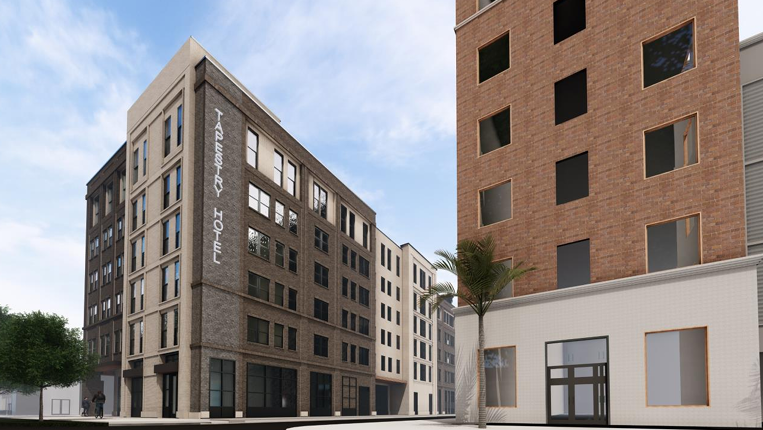A PROPOSED HOTEL downtown was sent back to the drawing board in the most noteworthy development coming out of recent meetings of the Metropolitan Planning Commission (MPC) and Historic District Review Board (HDRB).
In what is apparently set to be a Tapestry Hotel by Hilton directly across the street from the Savannah Civic Center on Liberty Street, the HDBR sided on Oct. 9 with overwhelming public opposition to the sheer size of the proposed five-story project.
“Our front door and their front door would be about 300 feet apart -- it’s just massive,” said neighborhood resident David Longwood. “We moved here from Houston to get away from massive buildings.”
Ellie Isaacs, Historic Savannah Foundation preservation officer, boiled down that organization’s position:
“This design will impact and set a precedent for any development set to go on across the street at the Savannah Civic Center site,” she said, referring to the planned demolition of the ‘70s era arena and parking lot, set to be replaced by a restored Oglethorpe plan.
“Developers and architects working in Savannah have a civic responsibility to design buildings that are unique and respectful of Savannah’s historic fabric and integrity,” Isaacs said. “We should demand better instead of worrying that our standards will cause less development.”
While HDBR staff recommended that the hotel be downsized, the developer’s attorney argued that the five-story hotel has plenty of precedent in that area of downtown.

But the public – and HDBR members – concluded that what matters are not the tallest buildings, but the actual buildings that are contributing structures to the Historic District in that area.
“All those precedents he described may as well have been in Manhattan,” said Andrew Jones, downtown resident and frequent critic of outsized development projects. “This would be visible from Pulaski Square. Contributing buildings are what you need to look at.”
The developer’s request for the fifth story was given a firm thumbs-down, with the project set to come back before the HDBR in January 2025.
“Given the context of the neighborhood, I think you should probably rethink [the fifth story],” said HDBR Chair Karen Guinn. “I don’t think there’s an appetite.”
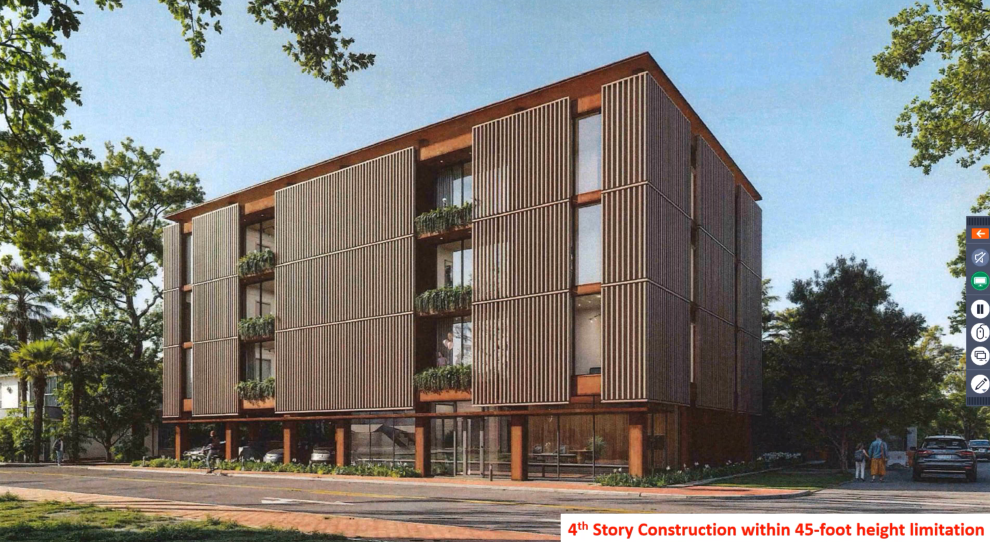
THE MPC unanimously approved a large apartment development at the intersection of Waters Avenue and 31st Street at its Oct. 15 meeting.
The developer requested, and received, a variance to have a fourth story and a reduced buffer.
The extra story, developer’s attorney Robert McCorkle said, is so residents can park underneath the apartments. He said most existing buildings in the area would also need variances granted to be up to modern code if they were built today.
“There’s a need for residential units in the area,” he said. “Almost every property in that corridor is already zoned TC1. Every single one of those properties would have buffer requirements applied to them today due to NEWZO,” a reference to the comprehensive zoning ordinance passed in 2019.
The project was in front of MPC in May but was sent back to the drawing board for adjustment.
Public opposition mostly cited parking and size concerns.
“A well-designed three-story apartment building could work at this location,” one neighborhood resident argued unsuccessfully.
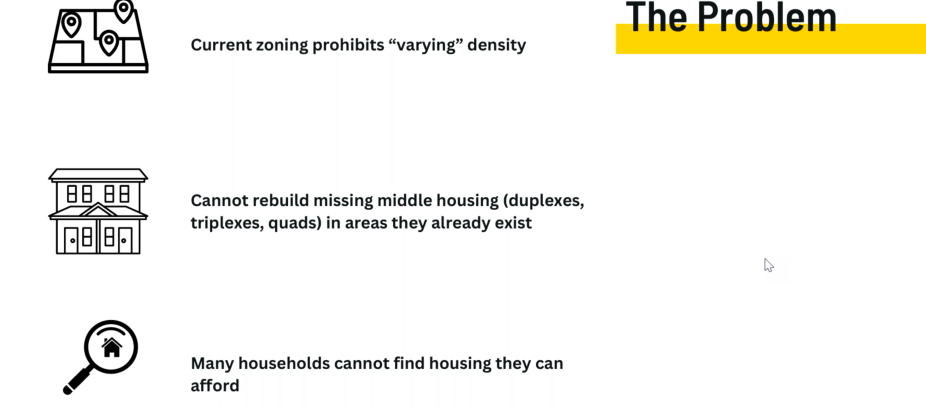
PERHAPS the most interesting long-term conversation at the MPC was about changing current zoning to encourage affordable housing by increasing density allowance.
To address the so-called “missing middle” housing sector – i.e., multi-family housing types in traditional single-family neighborhoods – a text amendment was passed for the TR, TN, and TC Zoning Districts.
“This proposal aims to establish a ‘density bonus’ program that encourages affordable housing development within Savannah’s traditional zoning districts,” reads the MPC staff report.
“The requested text amendments would grant variances to allow a reduced lot area per unit below the minimum specified by these zoning districts, provided that the reduced lot area is used to facilitate affordable housing through the proposed density bonus program.”
Preservationist Briana Paxton is the main author of the new language.
“One of the problems we have is trying to build a duplex on a 30-foot wide lot in TR2 zoning, that is now illegal per our zoning,” she explained.
“We currently define density as minimum lot area per unit. When you as an applicant can’t meet that, you can’t built that development. We also prohibit variances on minimum lot area per unit.”
The result is that smaller, denser projects in single-family neighborhoods, such as duplexes, simply cannot legally be built without a change in zoning regulation.
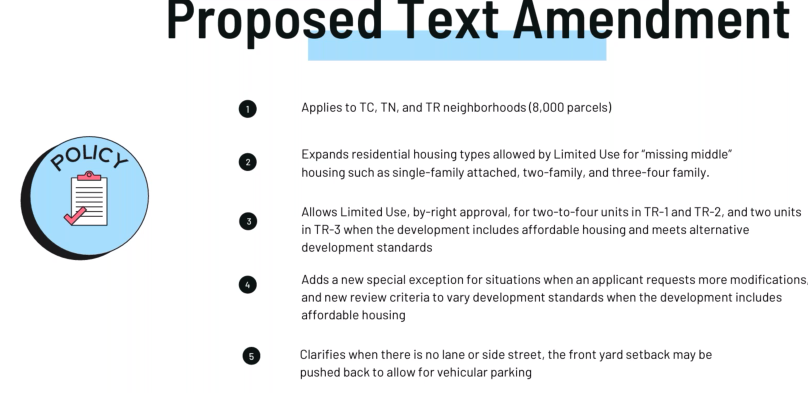
The new language will allow a staff-driven modification process, that would allow MPC staff to review developer’s applications and approve or disapprove them without public notice required – essentially giving “missing middle” developments what is called “by right” privileges that are granted to subdivision developers.
As many commenters at the meeting pointed out, a core dilemma in Savannah is that almost all of our historic and traditional neighborhoods were built prior to their being any zoning regulation at all in Savannah.
There were no zoning laws in Savannah prior to 1960, and the only update to those zoning laws was in 2019.
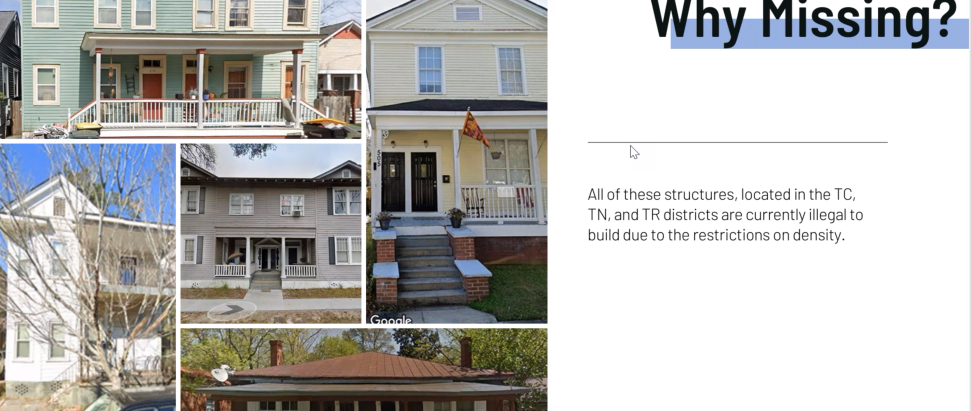
In addition, the historic record shows that a component of zoning regulation in the post-war era was specifically racist and intended to segregate residential areas.
Savannah City Manager Jay Melder – who by virtue of his position also holds a seat on the MPC – spoke in favor of the change:
“Given the history of zoning and the moral fluidity of public policy, it’s right that we would take some steps to improve and repair policies that in the past may have lessened access to critical infrastructure, like housing, for some people,” he said, encouraging what has been called “gentle density” in new development.

